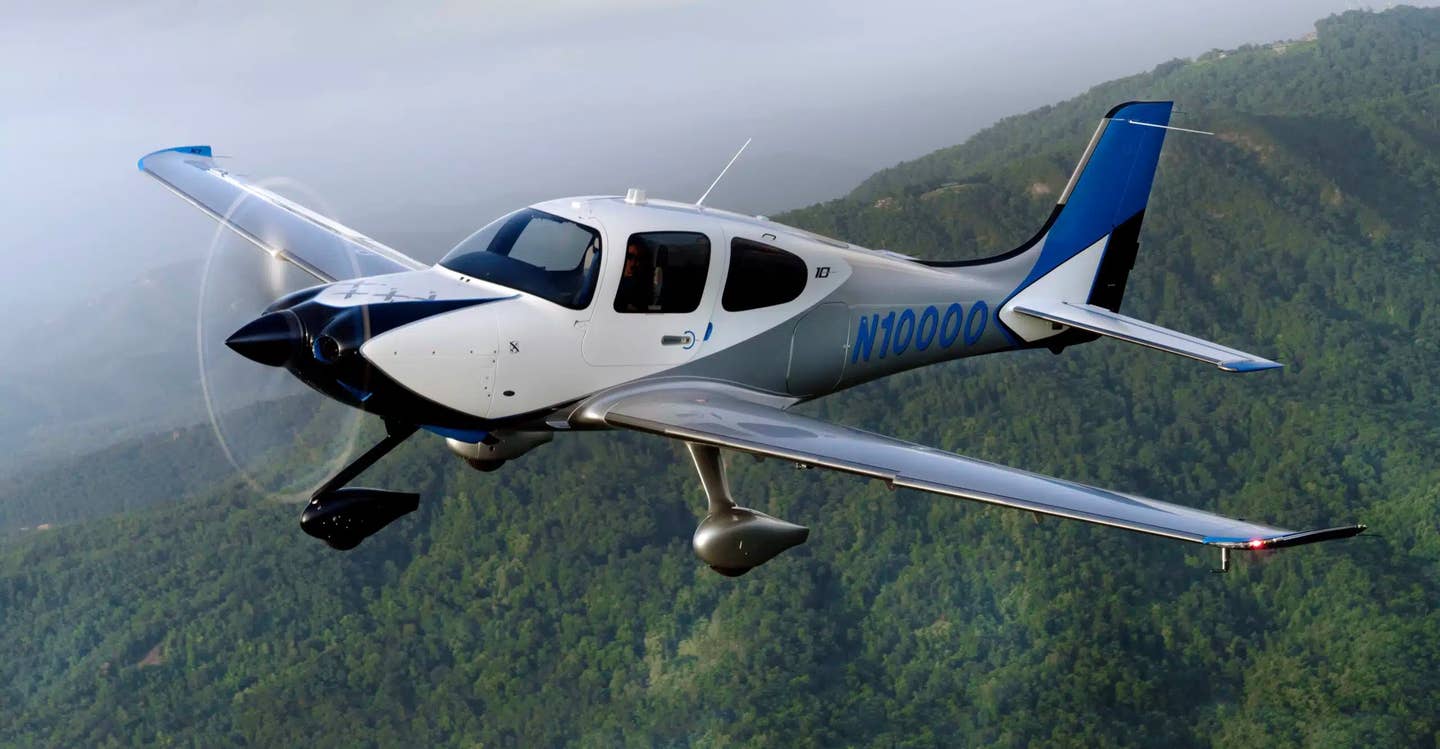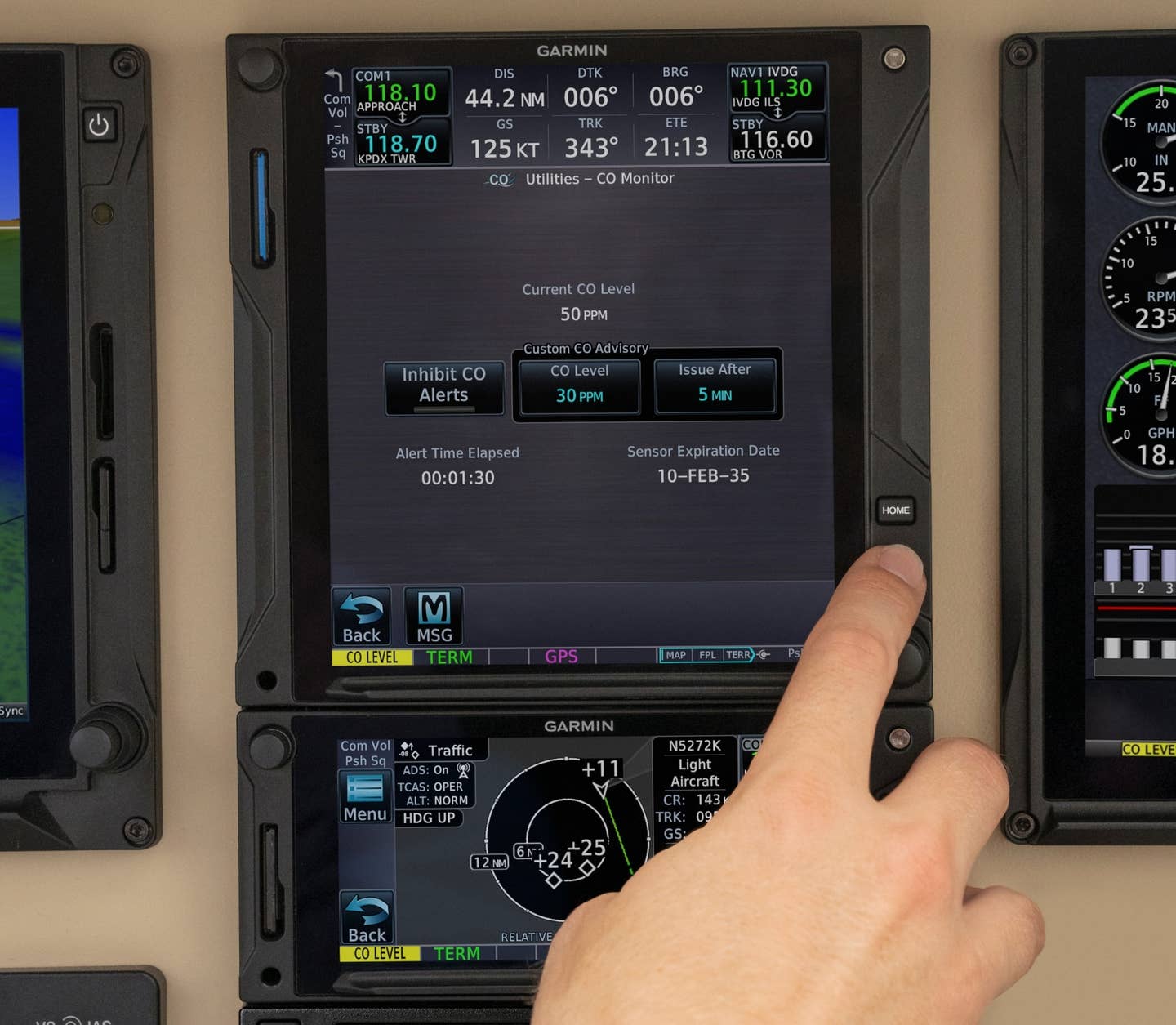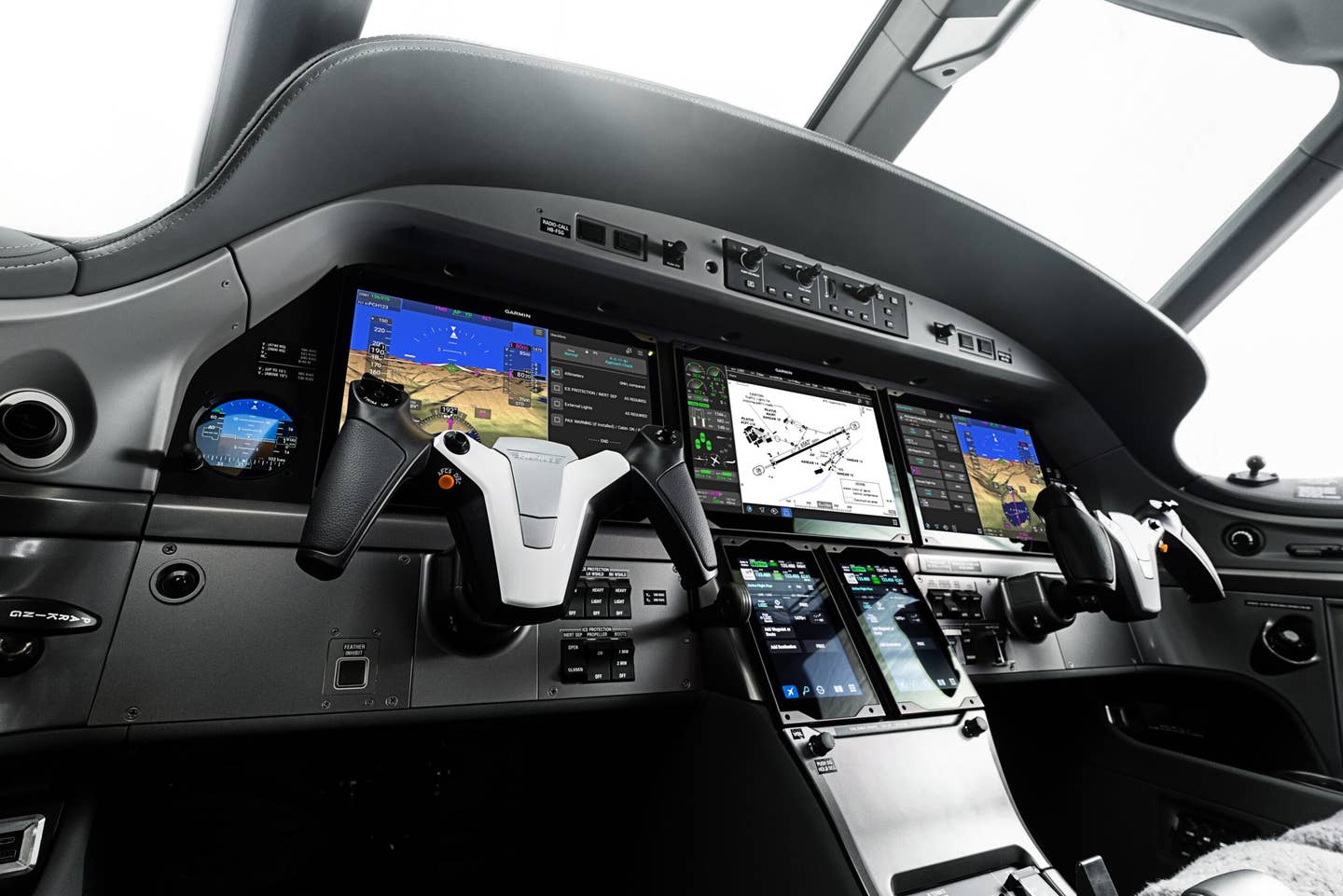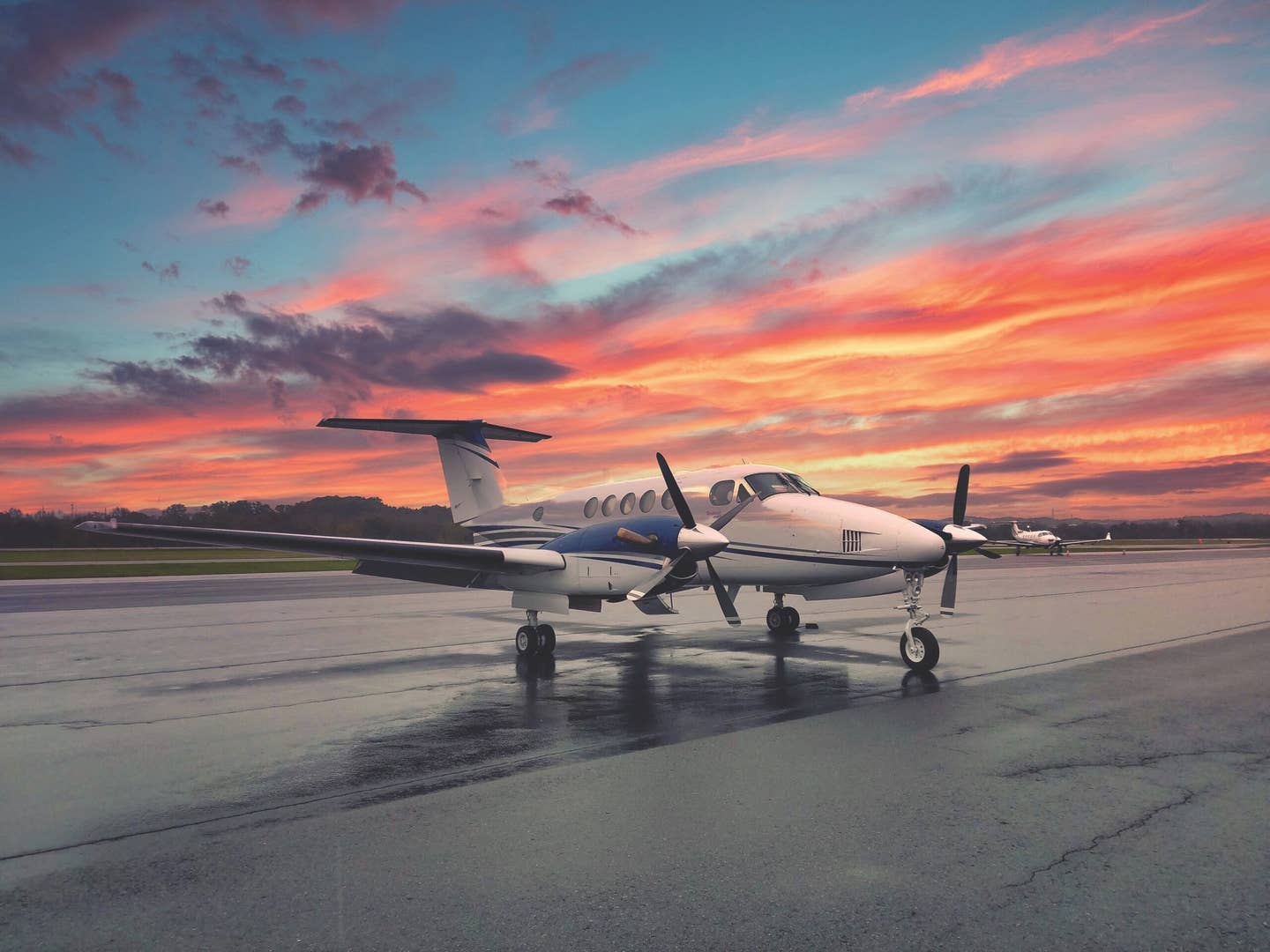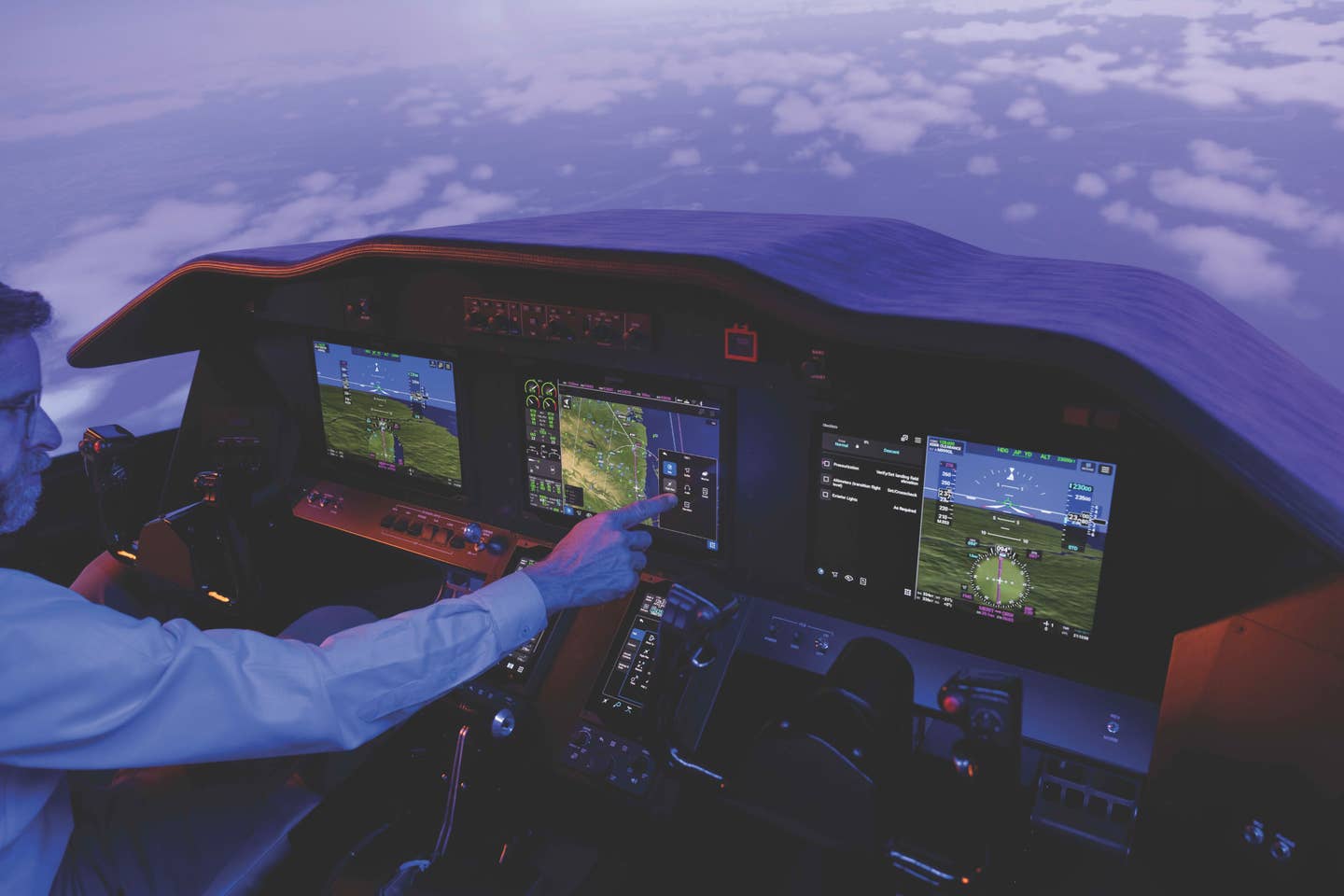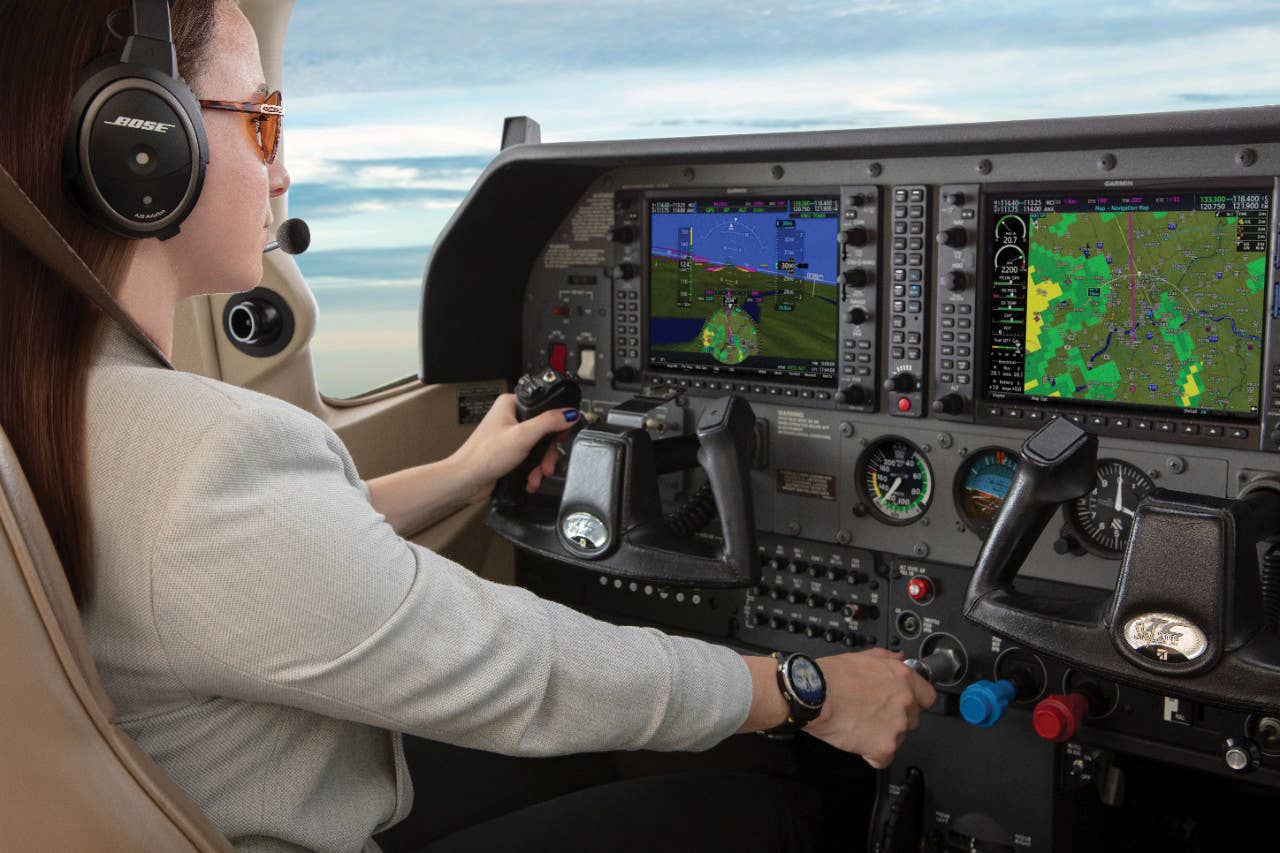
An integrated flight deck not only replaces the “six-pack,” but it also includes engine instruments and navigation. Garmin
As pilots, we try not to draw too many parallels between driving a car and flying an airplane, because they don’t have much in common aside from moving your body quickly through space. One place this really rings true sits in front of you when you get into the cockpit: the instrument panel. It’s the stretch of landscape above the flight controls—if you have a yoke or center stick—and the throttle quadrant in most training aircraft. The panel itself is typically crafted from aluminum or other metal, with plastic or vinyl molded fairings.
Though you may see a big glass screen in front of the pilot’s seat not unlike the one in your car, its functionality goes far beyond using a touchscreen to call up a radio station—what pilots call “tuning in a frequency”—or enter an address on the map. You will need to spend time on the ground learning the ins and outs of the instruments, gauges and devices you find in the panel because you can’t pull over by the side of the road to solve the problems of “What’s it doing?” or “How do I…?”
First off, that screen—if you have one—is part of a group of devices known as “avionics.” This term generally includes navigators (such as a GPS) as well as communication and navigation radios, intercoms, autopilots, weather-data displays, and engine-monitoring equipment.
And you may not have a screen at all, just a host of gauges grouped in what first appears to be a random fashion. Training aircraft come from a wide range of vintages—from traditional trainers such as Cessna 152s and Piper Cherokees to modern mounts such as the Diamond DA40 or Cirrus SR20. There are also new and old versions of the most popular training aircraft in the US, the Cessna 172 and the Piper PA-28 Warrior and Archer.
So, what you get up front in the panel can vary by quite a bit. Let’s walk through each of the categories of avionics to give you an orientation.
The Flight Instruments
In general, if you are flying an aircraft built before 2005 and it hasn’t been updated, you will see a collection of roughly six gauges (affectionately known as “the six-pack”) on the panel, and they will give you information on airspeed, altitude, attitude, vertical speed, heading and coordination. If you see a glass screen in the central position in front of the pilot, that’s a primary flight display, and it hosts the same information that’s presented in the six-pack but in a slightly different format. Your instructor will go into the details here, but this is where you will spend most of your time looking when you have your eyes inside the cockpit.
Navigating
While the flight instruments give you the airplane’s position in space, the navigation equipment in the panel tells you where you are and how to get to where you want to go. Most, if not all, modern aircraft have some form of GPS navigator, whether it is integrated into a flight deck (such as with the Garmin G1000, G3X or G500/600) or stands alone (such as the Garmin GNS 430/530 or GTN 650/750, the Avidyne IFD550/540/510, or the BendixKing AeroNav GPS or KLN 94). You may also find VOR-based navigators, ADF receivers, and (though they’re quickly becoming museum pieces) loran and area-navigation units.
You’ll learn how to navigate at first by looking out the window and identifying landmarks on the ground. Then you’ll learn how to navigate by following a heading and correcting that heading periodically for changing winds aloft. Finally, for your cross-country phase of training, you’ll learn how to use the GPS and VOR equipment on board—and anything else that happens to be in the panel. On your check ride, you could be asked about any of it, so ensure you take the time to learn every means of nav you have available.
Radio Comms/Intercom
You don’t just get to listen to the radio in an airplane—you must use it to talk with other pilots and air traffic control as well. How much you communicate with others depends on whether you’re training at an airport with a control tower or at a quiet rural field, but you will need to become fluent in the language of the airwaves. This isn’t your own chatroom, though; you need to keep transmissions short and sweet—and on the correct frequency. This is where knowing your comms setup in the panel comes into play.
Read More: Learn to Fly
Your radio interface will be in one of two places: either integrated into a flight deck, such as the G1000, or on a separate radio “box” in the panel, such as a Garmin GNC 225 or BendixKing KX 155/165. You may use a combination of both. You may also have a stand-alone intercom and audio panel to switch between comm radios, such as a PS Engineering PMA-series or Garmin GMA-series audio panel. Every airplane seems to differ in its specific radio setup, so your instructor will guide you through ensuring you know how to tune the right frequency and speak effectively. A separate transponder may also be part of the setup in your training airplane, and some of these have been installed to comply with automatic dependent surveillance-broadcast requirements for traffic reporting to ATC.
Autopilots
You want to fly the airplane, right? Well, sometimes it helps to have a hand up there, and that’s where autopilots come in. Because you’re new enough to flying that you need all the practice you can get, you probably won’t use the autopilot very much—and not at all until your cross-country flights. But you should learn how to operate it. The autopilot can not only save you energy when you’re making long flights by yourself, but it could save you a lot of stress too.
The most likely autopilots you’ll encounter in modern training aircraft are ones such as the GFC 700 integrated into the G1000 or similar models with other Garmin flight decks. You may also find stand-alone autopilots, such as the Genesys Aerosystems/S-Tec 55X, BendixKing AeroCruze or the BendixKing KFC 150/200/225 series.
Other Cool Stuff
Depending on how your training aircraft comes equipped, you may find a few special goodies in the panel to supplement the main avionics we’ve already covered. Many aircraft have some kind of engine-monitoring device and display, one that takes data from probes within the engine’s case and delivers it in a readable format to the pilot. One such unit, the JP Instruments EDM 800, might not look sophisticated, but it goes way beyond stock engine gauges to give insights into cylinder-head and exhaust-gas temperatures, fuel flow, and computation. Upgrades to the JPI series expand the display so you don’t have to cycle through pages to see the data.
Another segment of avionics centers around weather and traffic information. With the FAA requirement to equip with an information service called ADS-B (also noted in the “Radio Comms/Intercom” section) by January 2020, most aircraft with electrical systems in the US now have the ability to display basic traffic information and some weather data. From this baseline, there’s nowhere to go but up—satellite weather such as SiriusXM can be viewed on a multifunction display or an aftermarket display such as the Aspen Avionics EFD1000. Most training aircraft are too small to carry onboard weather radar or lightning-detection systems, but you can display satellite-based weather on your tablet if you can’t access the data on the panel.
This story appeared in the 2021 Learn to Fly Special Issue of Flying Magazine

Sign-up for newsletters & special offers!
Get the latest FLYING stories & special offers delivered directly to your inbox

